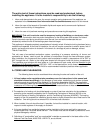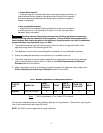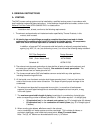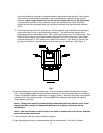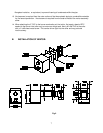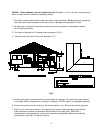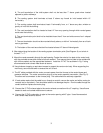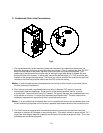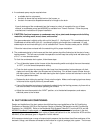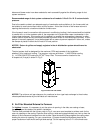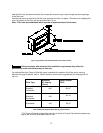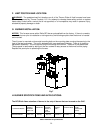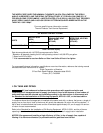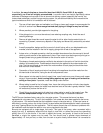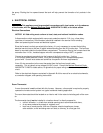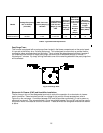
11
4. A condensate pump may be required when:
• a suitable drain is not present,
• the drain is above the trap outlet level on the furnace, or
• the drain line cannot be sloped downward its full length to the drain.
If gravity drainage of the condensate from the furnace to a drain is impractical for any of these
reasons, a condensate pump (part #350225) is available from Thermo Products. Follow the pump
manufacturer’s instructions for proper installation.
5.
CAUTION: Continual exposure to condensate may injure plants and damage certain building
materials, including metal, wood, stone, and concrete.
Flue gas condensate is slightly acidic with a pH of about 3.5. (A pH level of 7.0 is considered neutral.
Carbonated cola drinks with a pH of 3.1 are actually slightly more acidic than condensate.) If local
codes require an acid neutralizing kit, a kit is available from Thermo Products under part no. 320095.
Follow the instructions enclosed with the neutralizing kit for proper installation.
6. The condensate piping in the furnace and the drain system should be flushed out at the start of every
heating season. This will ensure trouble free operation and will keep the acidity level well above a pH
of 3.4, i. e. more towards neutral.
To flush the condensate drain system, follow these steps.
a. Turn off electrical power to the furnace at the disconnecting switch and adjust the room thermostat
to “OFF”, or to the lowest temperature setting.
b Flush the drain system by removing the drain hose from the secondary heat exchanger coil drain
nipple and running tap water into the open end of the tubing. Run at least a quart of water through
the drain system or more, until the water leaving the drain system is clear and colorless in color and
free of any particulate matter.
c Replace the drain tubing by pushing it firmly onto the nipple. Make sure the spring-type hose clamp
is returned to the original position to prevent leaks.
d. If any of the electrical controls are inadvertently wetted during the flushing process, dry them with a
soft cloth and wait 24 hours before operating the furnace.
e. Adjust the room thermostat to the “HEAT” position, or to the desired temperature, and restore
electrical power to the furnace.
D. DUCT WORK/AIR CONDITIONING:
Design and installation of the duct system should follow the current guidelines of the Air Conditioning
Contractors of America (ACCA) or the American Society of Heating, Refrigeration and Air Conditioning
Engineers, Inc. (ASHRAE). Refer to the Residential Duct Systems, Manual D, from the ACCA, and the
ASHRAE Handbook Fundamentals volume, from the ASHRAE, for recommended practices in the duct
system design and installation. To obtain copies of these publications for a fee, contact the ACCA and the
ASHRAE, at the addresses given in Appendix A of this manual.
All furnaces are tested over a range of external static pressure that simulates the airflow resistance of the
ductwork, fittings, and diffusers connected to the furnace for a typical (average) duct system. The furnace



